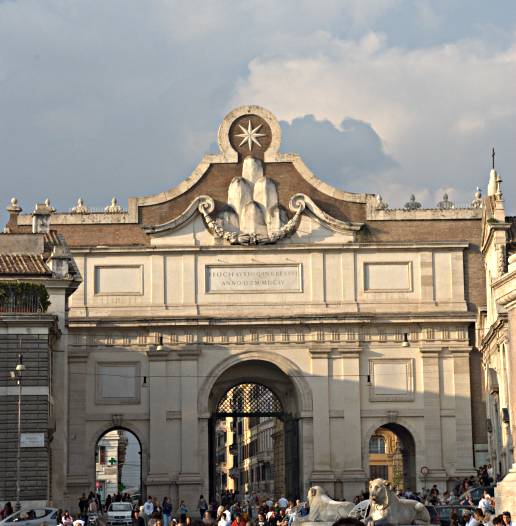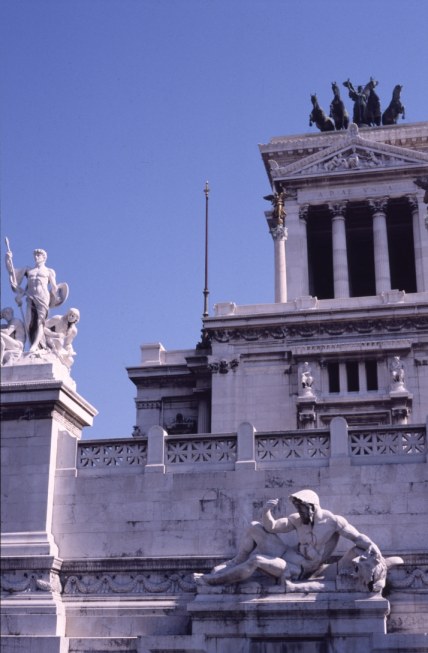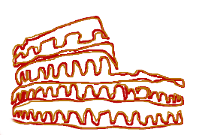Via del Corso, which cuts the centre of Rome, from piazza Venezia to piazza del Popolo, runs straight for 1500m, within two lanes of palaces built from the late Renaissance to the Rococè era, producing a grand, homogeneous and at the same time various show.

Porta del Popolo (People's Portal), in Piazza del Popolo, where Via del Corso begins
It follows the track of the medieval via Lata which, in ancient times, was the urban part of the roman street Flaminia. The Flaminia linked Rome to the provinces of the North.
It was Pope Paolo II that made it straight nearby piazza Venezia, in the XV century, and he also gave life to the horse races that give the name to the long street (in Italian, "race" is "corsa"). Extremely popular were the races of arabian horses ("cavalli berberi"). Pope Alessandro VII completed the linearization in the seventeenth century yet pavement came much later, and sidewalks only came in around 1850.

The Vittoriano, view from the ground, dominates Piazza Venezia, where Via del Corso ends
By the end of this century, the races were prohibited by the Italian Government and a few years later, sadly, the popular and joyful Roman Carnival that centred around via del Corso came to an end.
In 1900 the street was named after king Umberto I, but in 1947 (after the Second World War, then) it regained the previous name.
The numbering scheme in via del Corso is common in the old streets of the centre only, and instead of having the left numbers on one side and odd on the other, it The numbering scheme in via del Corso is common in the old streets of the centre only, and instead of having the left numbers on one side and odd on the other, it starts from one side of piazza del Popolo, growing to piazza Venezia, growing again back from piazza Venezia but on the other side.



